|
The Lotus Pond in Zuoying District of Kaohsiung is one of the most beautiful scenic areas in Taiwan. Much of the lake is full of traditional Chinese temples, gardens, and architecture. Because of its size, it cannot be properly appreciated by only going there for one afternoon; there are simply too many things to see and do there. In this blog, we will provide you a detailed virtual tour of the entire lake.
Historical Background: Lotus Pond was originally a small natural pond next to what is now the Zuoying Confucious Temple. Starting from 1686 after the Qing Dynasty captured Taiwan from the Kingdom of Tungming, the pond was gradually expanded for water storage and irrigation purposes. Also, lotus plants were cultivated on the pond, giving it its name. It was known as one of the eight beautiful scenes of Fengshan Old City. It also became a hotbed for temple building, and now over 20 temples stand by the lake. In 1951 the Qiming Temple, Spring and Autumn Pavilions, and Guanwu God Temple were completed. In 1976 the Dragon and Tiger pagodas were completed. In 1978 Wuli Pavilion was completed. Every year over a million visitors come to the park, although these numbers have gone down in recent years due to aging infrastructure and lack of new attractions. It is a haven for retired Taiwanese people to come and relax. Due to its close proximity to the Zuoying Jiucheng TRA station and Zuoying HSR station, it is also a popular attraction for tourists in Kaohsiung. Price: Free You can book water sport activities at the Lotus Pond on Klook here or KKday here. Hours: 8 AM - 6 PM (Dragon and Tiger Pagodas) Accommodation We have stayed at and recommend Chao She Hotel (you can book on Agoda here, Booking.com here, Hotels.com here, or Expedia here) IHI Sanduo Travel Hotel (you can book on Agoda here, Booking.com here, Hotels.com here, or Expedia here), and Mingli Hotel (you can book on Agoda here, Klook here, or Hotels.com here) which are three inexpensive and high quality choices in downtown Kaohsiung. I also have stayed at and recommend Kaohsiung Meinong Rabbit Paul Homestay B&B (you can book on Agoda here, Booking.com here, or Trip.com here), a quiet B&B in rural Meinong, and Chengching Lakeside Resort (you can book on Agoda here, Booking.com or Trip.com here)and the Grand Hotel Kaohsiung (you can book on Agoda here, Booking.com here, Hotels.com here, or Expedia here) which both offer breakfast buffet and free entrance into Chenqing Lake Park. I have also stayed at the 85 sky tower which offers great views of the city; you can search for rooms in the 85 sky tower on Agoda here, Booking.com here, Hotels.com here, Expedia here, or Trip.com here). Find out more about where to stay in our Taiwan hotels guide or search for the best hotel deals in Taiwan here. We recommend booking through Agoda here, which provides the best quality selection of accommodation on the islands. You can also book Wifi and SIM cards for Taiwan on Gigago here. Need travel insurance? Compare prices on Insubuy here. Tours: You can find more tours and activities in Kaohsiung such as Pier 2, Meinong Hakka Museum, Hamasen Railway Museum, Suzuka Circuit Park, i-Ride Kaohsiung Visual 5D Flying Theater, National Science and Technology Museum , Senya Village Restaruant, Austin Land, Ski School Indoor Ski Slope, and many more on Klook here or KKday here. Just to let you know, if you book using the links above, we get some commission at no cost to you, and you can help support our blog. You can click here to receive $5 USD on your first Klook purchase. How to Get There: By Car/Scooter: From central Kaohsiung, go north on provincial highway 17 and then turn north on Xinzhuang 1st Road. The pond is on your left and is hard to miss. There is free and paid parking all around the lake. Looking for scooter rental in Kaohsiung? You can check out Klook here or KKday here to search for options. You can check also out our scooter rental guide here. If you are looking for car rentals, you can search Qeeq here, KKday here, or Klook here. You can also check out our car rental guide here. By Train: From the north you can walk to the pond from Zuoying HSR station, or from the south you can walk there from Zuoying Jiucheng TRA Station. You can book tickets to travel to Kaohsiung via inter-city bus on Klook here. You can book tickets to Kaohsiung via high speed rail (HSR) on Klook here or KKDay here. Book tickets via the normal train (TRA) on Klook here. You can also book a Kaohsiung Travel pass here. By Bicycle: Cycling is the best way to enjoy Taiwan's landscapes if you have the time and energy. Looking for bicycle rentals in Taiwan? You can search on KKday here and search for tours on Klook here. You can also check out our Taiwan cycling guide here. Map:
0 Comments
Cheng Ching Lake (aka Cheng Cing Lake or Ching Qing Lake) in Kaohsiung is one of the most beautiful parks in Taiwan. Much of the lake is full of traditional Chinese gardens and architecture. Because of its size, it cannot be properly appreciated by only going there for one afternoon; there are simply too many things to see and do there. In this blog, we will provide you a detailed virtual tour of the entire lake.
People often don’t realize that Kaohsiung has a lot to offer to tourists. Many of the places down south aren’t represented as well in English as other sites in Taipei, which is why we want to help everyone realize what a great place it is. I used to live in Kaohsiung and exercised at Cheng Ching Lake daily, and it was like living in paradise every day. There are many Kaohsiung residents that visit the lake daily for free, and I envy them. Historical Background: Cheng Ching lake is the largest lake in Kaohsiung. Originally it was only a small irrigation pond, but in 1940 the Japanese diverted water here from the Gaoping River to act as a water supply for the surrounding area. During that time it was called Dabei Lake (大埤湖), however Chiang Kai-Shek (the leader of the ROC) renamed it Cheng Ching Lake (澄清湖) in 1963. The ROC army used the lake as a base shortly after the Chinese Civil War, and built an underground tunnel and bunker to prevent against nuclear attack, which has now been converted into the Cheng Ching Lake Exotic Marine Life Museum. The lake contains a number of memorials to ROC soldiers, such as memorial plaques, army veterans mausoleum, and Fuguo island to commemorate soldiers that fled to the island of the same name in Vietnam during the Chinese Civil War. The lake is meant to resemble Xihu (西湖, west lake) in Hangzhou, China. Chiang Kai-shek built a winter chateau on the lake, one of 30 guests houses that were built for him in Taiwan. Surrounding the lake are a number of other notable sites including the Kaohsiung Yuanshan Hotel Resort, Cheng Ching Lake Baseball Field, Cheng Ching Golf Club, Kaohsiung number 7 waterworks station, Kaohsiung Chang Gung Memorial Hospital, and Cheng Ching Lake Youth Activity Center. Chengqing Lake is also a water source for a large area of Kaohsiung. Because of this (as well as risk of drowning), fishing and swimming in the lake are forbidden. Every year over a million visitors come to the park, although these numbers have gone down in recent years due to aging infrastructure and lack of new attractions. It is a haven for retired Taiwanese people to come and relax, and more and more young people seem to forget it exists. Price: 100 NT per person 50 NT for students, 60/100 NT for cars (there is a discount for cars on weekdays), and 30 NT for scooters. Kaohsiung residents: free! Chengching Lakeside Resort: 1,000-3,000 NT per night (you can book on Agoda here, Booking.com or Trip.com here) Grand Hotel Kaohsiung: 3,000-10,000 NT per night (you can book on Agoda here, Booking.com here, Hotels.com here, or Expedia here) Hours: 4 AM - 9 PM (no entry after 6 PM) How to Get There: By Car/Scooter: There are two entrances to the park, one on the north side and one of the south side. There are plenty of places to park once inside. The price is 60/100 NT for cars (there is a discount for cars on weekdays), and 30 NT for scooters. Looking for scooter rental in Kaohsiung? You can check out Klook here or KKday here to search for options. You can check also out our scooter rental guide here. If you are looking for car rentals, you can search Qeeq here, KKday here, or Klook here. You can also check out our car rental guide here. By Bus: From the Weiwuying MRT station, you can take the 70A bus straight to the main entrance. You can book tickets to travel to Kaohsiung via inter-city bus on Klook here. You can book tickets to Kaohsiung via high speed rail (HSR) on Klook here or KKDay here. Book tickets via the normal train (TRA) on Klook here. You can also book a Kaohsiung Travel pass here. Accommodation We have stayed at and recommend Chengching Lakeside Resort (you can book on Agoda here, Booking.com or Trip.com here) and the Grand Hotel Kaohsiung (you can book on Agoda here, Booking.com here, Hotels.com here, or Expedia here) which both offer breakfast buffet and free entrance into Chenqing Lake Park. Find out more about where to stay in our Taiwan hotels guide or search for the best hotel deals in Taiwan here. We recommend booking through Agoda here, which provides the best quality selection of accommodation on the islands. You can also book Wifi and SIM cards for Taiwan on Gigago here. Need travel insurance? Compare prices on Insubuy here. Tours: You can find more tours and activities in Kaohsiung such as Pier 2, Meinong Hakka Museum, Hamasen Railway Museum, Suzuka Circuit Park, i-Ride Kaohsiung Visual 5D Flying Theater, National Science and Technology Museum , Senya Village Restaruant, Austin Land, Ski School Indoor Ski Slope, and many more on Klook here or KKday here. Just to let you know, if you book using the links above, we get some commission at no cost to you, and you can help support our blog. You can click here to receive $5 USD on your first Klook purchase. Map:
Taipingshan (aka Taipingshan National Forest Recreational Area 太平山國家森林游樂區) is a magical mountain paradise in Datong Township of Yilan County in Taiwan. It has an old Japanese era logging railroad track which has mostly been abandoned, but part of it has been restored with a working train. In addition there are hot springs, Taiwan's largest alpine lake, hikes, wildlife, and endless mountain scenery to explore.
Background: In 1906, the Japanese Indigenous affairs police officers sent a team of men to Fanfan Mountain, where they discovered huge ancient cypress trees. Later the Japanese renamed the area Taipingshan, and began logging the mountain in 1915. The Taipingshan Forest Railway was completed in 1934 and had at least 12 stations, with the grade up the mountain ranging from 2-3%. Loggers relied heavily on wires and pulley systems to haul logs to the railway, which differentiates it from the Alishan Railway. Because of the extensive use of wires or iron donkeys, it was difficult to convert the entire railway to a tourist railway, therefore only a short section at Maosing remains for tourists. The logging industry continued in Taiwan until it was banned in the 1980s, after which the area was converted into a forest recreation area in 1983 and opened to the public. The mountains in Taipingshan range from 500 to 2000 meters high, and is part of the northern central mountain range. The highest peak here is Nanhu Mountain at 3,740 meters high. The terrain generally consists of high mountains and deep valleys, which have been pushed up by the convergence of the Eurasian and Philippine plates, and eroded by torrential rains. Taipingshan is 12,929 hectares, and includes six major areas: Tuchang, Jioujhihze, Jhongjian, Taipingshan, Maosing and Cueifong Lake. Taipingshan holds the record for 24 hour rainfall in Taiwan of 1015 mm, recorded in 2016 during Typhoon Megi. The area is also one of the most accessible places in Taiwan to see snow during winter. The forest recreation area is now a popular place for nature enthusiasts and hikers, and is one of the top three most popular forest recreation areas in Taiwan. Hours: 6 AM to 8 PM (open 4 AM on weekends) Price: 150 NT for non-holidays, 200 NT for holidays Cars: 100 NT Scooters: 20 NT Jioujhize Hot Springs: 250 NT in winter and 150 NT in summer Bong Bong Train: 180 NT You can buy a discount entrance ticket to Taipingshan on KKday here or book a tour on Klook here. Website: https://tps.forest.gov.tw/ Tours and Activities: You can purchase tours and tickets for many activities in Yilan such as Su'ao Crayon Castle, Turtle Island, Lanyang Museum, Toucheng Leisure Farm, Zhang Mei Ama Capybura Farm, Bambi Land, Yinong Ranch, National Center for Traditional Arts, Taxi Museum, Glamping, Camping, ATV / 4-wheeling experience, SUP / paddle boarding, Ximeng Forest Theater, Surfing, Kayaking, Horse Riding, River Tracing, River Rafting, River Tubing, Pack Rafting, Water Biking, Snorkeling, Canoeing, Shrimping and many others through Klook here or KKday here. Accommodation: Looking for a hotel? We recommend booking through Agoda here, which provides the best quality selection of accommodation on the islands. We have stayed at and recommend Ying Shih Guest House, a resort in Datong Township near Taipingshan and Fan Fan Hot Spring (you can book on Agoda here or Booking.com here), and Jiaosi Hotspring Hotel, a hotel with hot springs in each room (you can book on Agoda here, Booking.com here, Hotels.com here, Expedia here, or Trip.com here). We have also stayed at Toucheng Leisure Farm, a recreational farm and experience center in Toucheng (you can book on Agoda here, Booking.com here, Hotels.com here, Expedia here, on Klook here, or on Trip.com here). You can also book Wifi and SIM cards for Taiwan on Gigago here. Need travel insurance? Compare prices on Insubuy here. Just to let you know, if you book using the links above, we get some commission at no cost to you, and you can help support our blog. You can click here to receive $5 USD on your first Klook purchase. How to get there: By Bus: Kuo-kuang departs from Yiland and Luodong at 7:40 and 8 AM, and arrives at Taipingshan at 10:30 AM. The bus then departs Taipingshan at 2:30 PM. You can book tickets to travel to Yilan via inter-city bus on Klook here. You can book tickets to Yialn via high speed rail (HSR) on Klook here or KKDay here. Book tickets via the normal train (TRA) on Klook here. Bicycle rental: Cycling is the best way to enjoy Taiwan's landscapes if you have the time and energy. Looking for bicycle rentals in Taiwan? You can search on KKday here and search for tours on Klook here. You can also check out our Taiwan cycling guide here. By Car/Scooter: From Taipei, take National Freeway 5 to Yilan, then turn southwest on provincial highway 7 until you reach the turnoff to Taipingshan via Yijhuan Route 1. Looking for scooter rental in Yilan? You can search Klook here or KKday here to look for options. You can also check out our scooter rental guide here. If you are looking for car rentals in Yilan, you can also search Klook here or KKDay here. You can also check out our car rental guide here. Map: Please see below of the places covered in this blog:
Taoyuan is a large, bustling city in northern Taiwan, known for having Taiwan's largest airport. But Taoyuan also has hidden treasures such as one of the best historical old streets in Taiwan, interesting cultural sites, amazing seafood markets, and mountain areas to explore.
Brief Historical Background of Taoyuan: The name Taoyuan literally means "peach garden" in Chinese because the area used to have many peach orchards. Since prehistoric times, Taoyuan was home to indigenous Taiwanese plains aborigines, who had a large settlement in modern-day Nankan. There was no large-scale Dutch or Chinese settlement in the area during the Dutch rule of Taiwan. During the Qing Dynasty, Chinese settlers began to settle the area and start farming, and many of them planted peach trees, which is how Taoyuan got its name. During the Japanese Era, Taoyuan City was planned and developed. Under the ROC, Taoyuan County was established in 1950, and later Taoyuan City was made the county seat. In 2014, Taoyuan City and Taoyuan County were combined into the special municipality of Taoyuan City. Taoyuan International Airport was completed in 1979 and is Taiwan's largest airport. Toayuan has a population of over 2.2 million and is one of the fastest-growing populations in Taiwan due to the low cost of living and proximity to Taipei. Basic Taoyuan Travel Tips:
When should you go to Taoyuan? In my opinion, the best weather in Taoyuan is from March-May, and October - November, when the temperatures stay around 26 degrees Celsius and there is not as much rain. Summers are also nice, with the most sunny weather, but also hot and rainy. Winters can be cold (but not below freezing) and usually wet. Overall, there is no wrong answer as to what time of year you should visit Taoyuan. You will have a great time here at any time of year. Where to stay: Looking for a hotel in Taoyuan? We recommend the Novotel Taipei Taoyuan International Airport which has great service and is conveniently located right next to Taoyuan Airport, the MRT, and HSR station (you can book on Agoda here or Booking.com here). We also recommend the Fullon Hotel Taoyuan which also has great service and is located in downtown Taoyuan City (you can book on Agoda here or Booking.com here). Looking for a hotel? We recommend booking through Booking.com here, which provides the best quality selection of accommodation in Taiwan. Find out where to stay in our Taiwan hotels guide or search for the best hotel deals in Taiwan here. Tours near Taoyuan: There are many tour itineraries that you can enjoy in Taoyuan that will take you to multiple destinations and arrange transportation. For more information, you can check out Tripadvisor here, KKday here or Klook here, which are both great tour websites that can connect you with the right tour and tour guide for you. Here are some of the most popular tours of Taipei on Tripadvisor:
Attractions in Taoyuan: There are many attractions that you can enjoy in Taoyuan such as Daxi Old Street, Hakka Tea Culture Center, Lala Mountain, Treemore Garden, MV Resort, Shimen Reservior, Dongyanshan, Tomita Garden Farm, Simbalion Art Studio, Taoyuan Jurassic Museum, Saw Seen Edo Style Theme Park, Yangmei Eco Farm, Jinge Tourist Factory, Mountain Foot Deer Farm, Yukids Island, Youth Experience Park, Xpark Aquarium, Window on World Theme Park, Capybara Ranch, Chiao Hu Wonderland, Blu Night Aquarium Hotel, Xinwu Green Tunnel, Xinxikou Suspension Bridge, Xiaowulai, Jiaobanshan, Sanmin Bat Cave, Caota Sand Dunes, Taiwu New Village and more on on Tripadvisor here, Klook here, or KKday here. Activities in Taoyuan: Ice Skating, Rock Climbing, Mountain Climbing, Cycling, High Ropes, Ziplining, Archery, Vietnamese BBQ, Batting Cages, Glamping, Van Camping, Photo Shoot, Turkish Mosaic DIY, Thai Massage, Painting, Baking, Go Karting, Imax Theater, Japanese Style Buffet, Tourist Factory Experience, peach and fruit picking, Ring-making DIY, handmade popsicle DIY, and more on on Tripadvisor here, Klook here, or KKday here. How to get there: The only way to get to Taiwan is via airplane. Planes leave daily from Taoyuan Airport. Taoyuan Airport: Taoyuan is Taiwan's largest airport and typically has cheaper flights and more flight times to choose from. It's about an hour's journey from Taoyuan Airport to the center of Taipei. You can travel via MRT, HSR, bus, or taxi to get to Taipei. You can get 30% off the Taoyuan Airport VIP lounge on KKday here. How to get around in Taoyuan: Taoyuan's transportation system is convenient and safe. There are many options you can consider to get around in Taipei below: By Train: Gets you to the city center of all major cities in Taiwan. It is about 800NT to get from Taipei to Kaohsiung. Roughly half the price of the HSR. Book tickets via the normal train (TRA) on Klook here. By HSR: (High-Speed Rail) – Gets you quickly from north to south. Besides Taipei and Kaohsiung, most of the stations are far from city centers. It costs about 1500NT to get from Taipei to Kaohsiung. You can book tickets to the high-speed rail (HSR) on Klook here or KKDay here. By MRT: (Mass Rapid Transit, Metro train, subway) – Easily gets you around Taipei and Kaohsiung. You can also book an MRT travel pass on Klook here. By Bus: Long-range buses such as Ubus and King Bus are easier to understand and cheaper than the local train. They can take you to the city center of every city throughout Taiwan and to remote tourist destinations such as sun moon lake. You can book an inter-city bus on Klook here. By Taxi: You can take short rides for about 150 NT, or hire a Taxi for a day for around 150 USD. You can charter a car on Klook here or KKday here. By Car: If you are looking for car rentals, you can also search Qeeq here, Klook here, or KKday here. You can also check out our car rental guide here. By Scooter: Looking for scooter rental in Taipei? Check out KKday here to search for options. You can also check out our scooter rental guide here. By Bicycle: Cycling is the best way to enjoy Taiwan's landscapes if you have the time and energy. Looking for bicycle rentals in Taiwan? You can use Taiwan's many Youbike bike sharing stations, or search for rentals on KKday here, and search for tours on Klook here. You can also check out our Taiwan cycling guide here. For more information, check out our Taiwan transportation guide here. Tourist Site Map: Check out our map below of tourist sites in Taiwan, which is constantly updated:
Sanlian Pond is a group of three ponds known for its large white egret statue and views of passing trains in Yangmei District of Taoyuan County. Nearby are lots of bike paths, including paths that link up to and encircle other nearby ponds. You can also check out the nearby Fugang Old Street.
Historical Background: Since prehistoric times, the area around Fugang was home to indigenous Taiwanese plains aborigines. There was no large-scale Dutch or Chinese settlement in the area during the Dutch rule of Taiwan. During the Qing Dynasty, Chinese settlers began to settle the area and begin farming. Fugang Old Street includes Zhongzheng Road, Xinyi Street, Fuyuan Road, Xinming Street, Zhonghua Street, and Chenggong Road, which are in front of the present Fugang Station. Formerly known as "Bogonggang 伯公岡" Fugang Station was established in 1929 during the Japanese colonial period, after the northward shift of the Western Trunk Line. After the train station was established, a local market street began to form in front of the station. Bogongang Park is named after the old place name of Fugang. However, with the rerouting of major stops along the railway (now only local trains stop here), prosperity in the town began to stall, while leaving the beautiful baroque style buildings here as a testament to the area's former glory. Sanlian Pond was chosen to be part of the 2018 Taoyuan Land Art Festival. The giant white egret statue was chosen because egrets coexist with both rice paddies and ponds that are abundant in the area. The artist behind the sculpture is Hsu Tsung-chieh (許宗傑), who won the first prize at the Kaohsiung World Trade Center Exhibition in 2017. The statue is made from long stainless steel pipes and is over 10 meters long, with the bird standing 9 meters tall. The nearby ponds are meant to reflect the statue's image in the water showing its integration into the landscape. Price: Free Hours: 24/7 Where to stay: Looking for a hotel in Taoyuan? We recommend the Novotel Taipei Taoyuan International Airport which has great service and is conveniently located right next to Taoyuan Airport, the MRT, and HSR station (you can book on Agoda here or Booking.com here). We also recommend the Fullon Hotel Taoyuan which also has great service and is located in downtown Taoyuan City (you can book on Agoda here or Booking.com here). Looking for a hotel? We recommend booking through Booking.com here, which provides the best quality selection of accommodation in Taiwan. Find out where to stay in our Taiwan hotels guide or search for the best hotel deals in Taiwan here. Activities in Taoyuan: Ice Skating, Rock Climbing, Mountain Climbing, Cycling, High Ropes, Ziplining, Archery, Vietnamese BBQ, Batting Cages, Glamping, Van Camping, Photo Shoot, Turkish Mosaic DIY, Thai Massage, Painting, Baking, Go Karting, Imax Theater, Japanese Style Buffet, Tourist Factory Experience, peach and fruit picking, Ring-making DIY, handmade popsicle DIY, and more on on Tripadvisor here, Klook here, or KKday here. How to get there: By Car: From Taoyuan, take Provincial Highway 31 southwest to Taoyuan and turn right on Minfu Road. The pond is on the east side of town and can be confusing to get there by car. There is free parking on the side of the road. If you are looking for car rentals, you can also search Qeeq here, Klook here, or KKday here. By Scooter: From Taoyuan, take Provincial Highway 31 southwest to Taoyuan and turn right on Minfu Road. The pond is on the east side of town and is easily accessible by scooter. There is free parking on the side of the road. Looking for scooter rental in Taoyuan? Search Klook here or KKday here to look for options. By TRA: You can take the local train to Fugang TRA Station. The pond is within walking distance. You can book tickets to travel to Taoyuan via inter-city bus on Klook here. Book tickets via the normal train (TRA) on Klook here. By Bicycle: Cycling is the best way to enjoy Taiwan's landscapes if you have the time and energy. Looking for bicycle rentals in Taiwan? You can use Taiwan's many Youbike sharing stations, or search for rentals on KKday here, and search for tours on Klook here. You can also check out our Taiwan cycling guide here. You can also book a cycling tour on TripAdvisor here. For more information, check out our Taiwan transportation guide here. Map: See below:
Longtan Lake is a beautiful scenic lake in the middle of Longtan District of Taoyuan. Here you can find majestic scenery, stroll across five bridges around the lake, enjoy local cuisine, and marvel at the Longtan temple which sits on an island in the middle of the lake. It is also the location of boat races during the Dragon Boast Festival. It is a great place to spend an afternoon with the whole family.
Brief Historical Background: Longtan Lake is man made, and was created for irrigation purposes in 1748 by local leader Zhimuliu. During the Qing Dynasty, the lake was called Lingtanpi in honor of the local temple at the time, but was changed to Longtan during the Japanese era likely as a mistake since the name sounds the same in Taiwanese. The Lake spans 18 Hectares and is about half a meter deep. After the construction of the suspension bridge in 1971 and Nantian Temple in 1972 on a man made island in the lake, the lake soon became a major tourist attraction in the area. In the summer, a child's splash pool opens on the southern side of the lake. There are also bike paths, a children's playground, walking trails, a music memorial hall, and paddle boat rentals. The area Hours: 24/7 Longtan Dragon Boat Races: June 8th-10th 2024 Check out our full guide to Taiwan's dragon boat festival here. Price: Free Where to stay: Looking for a hotel in Taoyuan? We recommend the Novotel Taipei Taoyuan International Airport which has great service and is conveniently located right next to Taoyuan Airport, the MRT, and HSR station (you can book on Agoda here or Booking.com here). We also recommend the Fullon Hotel Taoyuan which also has great service and is located in downtown Taoyuan City (you can book on Agoda here or Booking.com here). Looking for a hotel? We recommend booking through Booking.com here, which provides the best quality selection of accommodation in Taiwan. Find out where to stay in our Taiwan hotels guide or search for the best hotel deals in Taiwan here. Activities in Taoyuan: Ice Skating, Rock Climbing, Mountain Climbing, Cycling, High Ropes, Ziplining, Archery, Vietnamese BBQ, Batting Cages, Glamping, Van Camping, Photo Shoot, Turkish Mosaic DIY, Thai Massage, Painting, Baking, Go Karting, Imax Theater, Japanese Style Buffet, Tourist Factory Experience, peach and fruit picking, Ring-making DIY, handmade popsicle DIY, and more on on Tripadvisor here, Klook here, or KKday here. How to get there: By Car: Take National Freeway 3 to Longtan. The pond is near the city center. There is limited paid parking near Nantian Temple and also other paid parking nearby. If you are looking for car rentals, you can also search Qeeq here, Klook here, or KKday here. By Scooter: Take Provincial Highway 3 to Longtan, then continue southwest until you reach the lake. Looking for scooter rental in Taoyuan? Search Klook here or KKday here to look for options. By Bus: There are many buses that leave from Zhongli TRA station to Longtan. The ride takes about an hour. You can also take an inter-city bus from Taipei Main Station. You can book tickets to travel to Taoyuan via inter-city bus on Klook here. Book tickets via the normal train (TRA) on Klook here. By Bicycle: Cycling is the best way to enjoy Taiwan's landscapes if you have the time and energy. Looking for bicycle rentals in Taiwan? You can use Taiwan's many Youbike sharing stations, or search for rentals on KKday here, and search for tours on Klook here. You can also check out our Taiwan cycling guide here. You can also book a cycling tour on TripAdvisor here. For more information, check out our Taiwan transportation guide here. Map: Check out the map below:
Nangang Park is one of the most pleasant parks in Taipei. It features two large natural ponds, a large grassy area, a large children's play area, a jogging track, hiking trails, tennis courts, and much more. There are also amazing views of the nearby mountains, Taipei City, and the 101 tower. It is definitely worth a stop if you are in the area.
Background: Nangang Park was originally called "Houshanpi 後山埤" which MRT Houshanpi Station on the blue line is named after, and literally means "the lake behind the hill." There are two other lakes in Nangang nearby, one is down the street from the park called Dongxinpi 東新埤, and the other one is accessible from Academia Sinica called Sanchongpupi 三重埔埤. The three lakes are home to waterfowl and other wildlife. Originally Houshanpi was one lake but was later split into two because of silting. Nangang Park was established in 1987 around the natural Houshanpi Lake/Pond. The pond also acts as a flood control system. The park is usually not very busy but you will see a lot of people here during nice weather and on weekends and holidays. Tours: You can book a tour of Taipei on Tripadvisor here, KKday here or Klook here. Where to stay: High end: We have stayed at and recommend the Nangang Marriott (book on Booking.com here or Agoda here). We have also stayed at and recommend the Yuanshan Grand Hotel, once the tallest building in Taiwan and still the most grand (book on Booking.com here or Agoda here). Looking for a hotel? We recommend booking through Booking.com here, which provides the best quality selection of accommodation in Taiwan. Find out where to stay in our Taiwan hotels guide or search for the best hotel deals in Taiwan here. How to get there: By Car/Scooter: From Houshanpi MRT station on Zhongxiao East Road, turn east onto Dongxin Road until you reach the park. There is paid parking at the park entrance and on the side of the road. Looking for scooter rental in Taipei? You can search on Klook here or KKday here to search for options. You can also check out our scooter rental guide here. If you are looking for car rentals, you can also search Qeeq here, Klook here, or KKday here. You can also check out our car rental guide here. By Bus/MRT: From Kunyang MRT station on Zhongxiao East Road, walk east until you reach the park. The park is about a 10 minute walk. You can purchase a discount easy card to use on the MRT from Klook here or KKday here. You can also book an MRT travel pass on Klook here. By Bicycle: Cycling is the best way to enjoy Taiwan's landscapes if you have the time and energy. Looking for bicycle rentals in Taiwan? You can use Taiwan's many Youbike sharing stations, or search for rentals on KKday here, and search for tours on Klook here. You can also check out our Taiwan cycling guide here. You can also book a Sunset Riverside Bike Ride and Historical Tour, 4 Hour Cycling in Taipei, Ultimate 8-Hour Cycling City Tour, or Taipei City Bike Tour with Night Market Experience on TripAdvisor here. For more information, check out our Taiwan transportation guide here. Map: Please see below:
Xinshan Dream Lake (aka Xinshan Menghu) is a beautiful lake in Xizhi District of New Taipei. It is a popular place to stop for couples and Instagrammers due to its dream like aura. Also you can take the steep climb up Xinshan and enjoy some amazing views of east Taipei and Keelung. Besides taking photos, this Xinshan Dream Lake is a great place to relax and enjoy nature.
Background: The rock formations that form the Xinshan Dream lake hike formed as sediment under the ocean millions of years ago, and was later uplifted thanks to the collision of the Eurasian and Phillipine plates. The rocks are mainly sedimentary and are part of the same formation that forms the special rock formations on the northern coast around Keelung, and the waterfalls in Pingxi. Xinshan sits at 499 meters above sea level, while dream lake is 325 meters above sea level, which means the hike gains 175 meters from dream lake (in less than .5 KM), making it a short, steep hike. Dream Lake get's its name from the thick fog that covers it during winter months, making it look like a dreamscape. Dream Lake is a popular spot for couples, wedding photography, and Instagram photos. Hours: 24/7 Price: Free Hike Difficulty: Moderate: About an hour hike round trip, steep and difficult climbing through the forest with aid of ropes. Tours in Taipei: There are many tour itineraries that you can enjoy in Taipei that will take you to multiple destinations and arrange transportation. For more information, you can check out Tripadvisor here, KKday here or Klook here, which are both great tour websites that can connect you with the right tour and tour guide for you. Activities in Taipei: You can also look for more activities in Taipei such as Rock Climbing, Surfing, Speedboat Surfing, Diving, Snorkeling, Cooking Class, Glamping, Motorcycling, and more on Klook here or KKday here. Hotels in Taipei: We have stayed at and recommend the Yuanshan Grand Hotel, once the tallest building in Taiwan and still the most grand (book on Booking.com here, Tripadvisor here, or Agoda here). We have stayed at and also recommend Fu Chang Hotel in Ximending, which is within walking distance of Ximending shopping district (book on Booking.com here, Tripadvisor here, or Agoda here). Looking for a hotel? We recommend booking through Booking.com here, which provides the best quality selection of accommodation in Taiwan. Find out where to stay in our Taiwan hotels guide or search for the best hotel deals in Taiwan here. How to get there: By Car/Scooter: Take Xiwan Road (夕萬路) from Xizhi until you come to the turnoff the Xinshan Menghu on the right. It is a small one lane road up the mountain. There is scooter parking and limited car parking on the side of the road. You may need to park further down and hike up if you drive a car. The Lake trail is at the end of the road. Looking for scooter rental in Taipei? You can search on Klook here or KKday here to search for options. You can also check out our scooter rental guide here. If you are looking for car rentals, you can also search Qeeq here, Klook here, or KKday here. You can also check out our car rental guide here. By Bus: Take Dongnan Bus F910 from Xizhi Park about 40 minutes up the mountain to Xiwan Raod Bridge No. 3. From there you have to hike up to Xinshan before you come down to dream lake. Or you can get off at Menghu Intersection, but it is a long walk up the road. You can purchase a discount easy card to use on the MRT from Klook here or KKday here. You can also book an MRT travel pass on Klook here. By Bicycle: Cycling is the best way to enjoy Taiwan's landscapes if you have the time and energy. Looking for bicycle rentals in Taiwan? You can use Taiwan's many Youbike sharing stations, or search for rentals on KKday here, and search for tours on Klook here. You can also check out our Taiwan cycling guide here. ​You can also book a Sunset Riverside Bike Ride and Historical Tour, 4 Hour Cycling in Taipei, Ultimate 8-Hour Cycling City Tour, or Taipei City Bike Tour with Night Market Experience on TripAdvisor here. For more information, check out our Taiwan transportation guide here. Map: Please see below:
Thousand Island Lake (Officially Feitsui Reservoir 翡翠水庫 or Emerald Lake) is a reservoir in New Taipei that sits in Shiding District. It is a popular place to visit because the reservoir winding through the mountain valleys looks like many islands from a distance. It also has the largest concrete dam in Taiwan.
Background: When it was seen in the 1970s that the Shimen Dam could not meet all the water needs of greater Taipei, the Taipei City government set out to build another dam along the Beishi River. The Dam was completed in 1987 at a cost of 11 billion NT. The Dam holding the reservoir back is 122 meters high and 510 meters long, making it the biggest concrete dam in Taiwan by volume. The Dam today serves over 6 million people in greater Taipei. Besides providing water, the dam also generates electricity. To ensure water quality, most of the Dam is closed off the the public, expect with a permit and accompaniment by a guide. The best place to see the Dam is from the tea plantations on the Shiding side (northeast). Hours: 24/7 Price: Free Tours: You can book a tour to Thousand Island Lake on TripAdvisor here, Klook here or KKday here. Hotels in Taipei: We have stayed at and recommend the Yuanshan Grand Hotel, once the tallest building in Taiwan and still the most grand (book on Booking.com here, Tripadvisor here, or Agoda here). We have stayed at and also recommend Fu Chang Hotel in Ximending, which is within walking distance of Ximending shopping district (book on Booking.com here, Tripadvisor here, or Agoda here). Looking for a hotel? We recommend booking through Booking.com here, which provides the best quality selection of accommodation in Taiwan. Find out where to stay in our Taiwan hotels guide or search for the best hotel deals in Taiwan here. How to get there: Car/Scooter: Take provincial highway 9 east toward Pinglin. Take a right down the mountain right before Taipei Garden Cemetery. There are a few restaurants and lookouts along this road. Looking for scooter rental in Taipei? You can search on Klook here or KKday here to search for options. You can also check out our scooter rental guide here. If you are looking for car rentals, you can also search Qeeq here, Klook here, or KKday here. You can also check out our car rental guide here. Bus: Take Sindian Bus GR12 east to Shisangu Station. From there you can walk about half an hour down to the lookout. You can also book tickets to travel to Shiding via inter-city bus on Klook here. You can also book a Taipei Sightseeing: Hop On, Hop Off Open Top Bus on TripAdvisor here. By Bicycle: Cycling is the best way to enjoy Taiwan's landscapes if you have the time and energy. Looking for bicycle rentals in Taiwan? You can use Taiwan's many Youbike sharing stations, or search for rentals on KKday here, and search for tours on Klook here. You can also check out our Taiwan cycling guide here. You can also book a Sunset Riverside Bike Ride and Historical Tour, 4 Hour Cycling in Taipei, Ultimate 8-Hour Cycling City Tour, or Taipei City Bike Tour with Night Market Experience on TripAdvisor here. For more information, check out our Taiwan transportation guide here. Map: Please see below:
Bitan is a slow moving part of the Xindian River in Xindian District of New Taipei. It is also known as Bitan Lake, or Bitan Scenic Area (碧潭風景區). Here you can bike ride, paddle boat, go hiking, and shop at Xindian Old Street (新店老街). With convenient transportation via Taipei MRT, it is definitely worth a stop on your trip to Taipei.
Background: The name Bitan means "green lake" in Chinese, which was coined by Sun Ke, vice chairman of the KMT after WWII. It is also known as Chibi Lake (赤壁潭)、Shibi Lake (石壁潭)、and Shishan Big Lake (獅山邊大潭). Bitan suspension bridge was completed in 1937. Before that time, ferry boat was the best means of transport. In 1997, the National Freeway 3 bridge was completed across the lake. In 2000, Bitan Suspension Bridge was refurbished. It is also known as one of Taiwan's top 12 or top 8 sights. It is also a very popular recreational spot for Taipie residents on the weekend. Near Bitan is Xindian Old Street (新店老街), which sells street food, fruits, and vegetables. It has been the main acrigultural market in Xindian for over a hundred years. The Changxing Temple on the Old Street (長興宮) is over 150 years old, and is dedicated to the Earth God. Hours: About 8 AM to 10 PM. Price: Free entrance Ferry boat: 20 NT one way Paddle boats: 300 NT for a two person boat, more for more people or electric boats Bike rental: 15-70 NT per hour depending on the bike SUP Paddle Boarding: 2000-3000 NT You can book an SUP / Stand up Paddle boarding experience at Bitan on TripAdvisor here, Klook here, or KKday here. Tours and Activities: You can book an SUP / Stand up Paddle boarding experience at Bitan on TripAdvisor here, Klook here, or KKday here. How to get there: By MRT: Take the Green Line MRT south to Xindian Station, or Xiaobitan Station. Xindian Old Street is within walking distance of Xindian Old Street. From Xiaobitan Station, you can rent a bike and ride up the river to Xindian Old Street. You can also book an MRT travel pass on Klook here. By car/scooter: From Taipei, go south on provincial highway 9 until you reach Xindian Old Street. There is paid parking near the old street. Looking for scooter rental in Taipei? You can search on Klook here or KKday here to search for options. You can also check out our scooter rental guide here. If you are looking for car rentals, you can also search Qeeq here, Klook here, or KKday here. You can also check out our car rental guide here. By Bicycle: Cycling is the best way to enjoy Taiwan's landscapes if you have the time and energy. Looking for bicycle rentals in Taiwan? You can use Taiwan's many Youbike sharing stations, or search for rentals on KKday here, and search for tours on Klook here. You can also check out our Taiwan cycling guide here. You can also book a Sunset Riverside Bike Ride and Historical Tour, 4 Hour Cycling in Taipei, Ultimate 8-Hour Cycling City Tour, or Taipei City Bike Tour with Night Market Experience on TripAdvisor here. For more information, check out our Taiwan transportation guide here. Map: Please see below:
Lantan Lake, also known as Orchid Lake, and Renyitan Reservior are two reservoirs right next to each other near Chiayi City, drawing water from the Bazhang River (八掌溪). The reservoirs are interconnected, and together they serve as main source of Chiayi City's water, and date back to the Dutch rule of Taiwan. Both are also great places to relax and enjoy the scenery near Chiayi.
Background: Lantan Lake Reservior 蘭潭水庫: Lantan Lake dates back to the Dutch Rule of Taiwan in the1600s. The Bazhang River was dug out and dammed by the dutch to provide irrigation to the surrounding farmland, which produced crops for the Dutch East India Trading Company. After the Dutch rule, the lake went largely to waste until the Japanese occupation when it was rebuilt. Currently Lantan Lake along with Renyitan are main source of water for Chiayi City. Renyitan Reservior 仁義潭水庫: Renyitan Reserivour was completed along the Bazhang River in 1987 to add water reserves to Chiayi City, because Lantan Lake was not providing enough for water need. It is105 meters deep at its deepest point. It is connected with Lantan Lake and can be used to adjust the Lake's Water level. Renyitan and Lantan Lake are the main water source for Chiayi City. Hours: 24/7 Price: Free Tours and Activities: You can purchase tours and tickets for many activities in Chiayi such as glamping, Three Pigs Farm, Janfusun Fancy World, Taiping Suspension Bridge, Chateau de Jourdeness , Kumquat Tourist Factory, Taisugar Siantou Cultural Park, Meteor Garden, Veoveoana Tribe Tour, Danayi Valley, Batongguan Historic Trail, Xianghe Leisure Farm, Foot massage and many others through Klook here or KKday here. Accommodation: We have stayed at and recommend Chiayi Crown Hotel (you can book on Agoda here, Booking.com here, Hotels.com here, or Expedia here), Shin Kao Hotel (you can book on Agoda here or Trip.com here), and YesHotel (you can book on Agoda here, Booking.com here, Hotels.com here, or Expedia here), which are all quality hotels for a reasonable price near Chiayi Station. We also recommend Shianghu Botique Hotel (you can book on Agoda here, Booking.com here, Hotels.com here, or Expedia here), with excellent quality for the money just our of Chiayi City center. Find out more about where to stay in our Taiwan hotels guide or search for the best hotel deals in Taiwan here. We recommend booking through Agoda here, which provides the best quality selection of accommodation on the islands. You can also book Wifi and SIM cards for Taiwan on Gigago here. Need travel insurance? Compare prices on Insubuy here. Just to let you know, if you book using the links above, we get some commission at no cost to you, and you can help support our blog. You can click here to receive $5 USD on your first Klook purchase. How to get there: By Car/scooter: From Chiayi Station, go east on Chiuyang Road, then once you get near the resevior, take a right on Xiaoya Road. The Road will take you to the Lantan Lake scenic area, then it is a short ride east to Renyitan. If you are looking for car rentals, you can also search Qeeq here, Klook here, or KKday here. You can also check out our car rental guide here. Looking for scooter rental in Chiayi? You can check out Klook here or KKday here to search for options. You can also check out our scooter rental guide here. By Bus: From Chiayi Station, go east on Chiayi County Bus No. 1 until you reach Lantan Scenic Area (Yueyingtanxin Stop). You can book tickets to travel to Chiayi via inter-city bus on Klook here. Map: Please see below:
Gangshan's Skywalk Bridge (aka Xiaogangshan Skywalk Park) is a tourist attraction in Gangshan District of Kaohsiung, which features great views of Agongdian Reservoir and norther Kaohsiung City. The bridge is in the shape of a violin, and there is constant music playing here. If you visit Kaohsiung, this place should definitely be on your list.
Background: Siaogangshan Skywalk Park was completed in 2018 at the price of 128,000,000 NT. It is 40 meters tall and 88 meters wide. It officially opened February 14th, 2018. The main pylon resembles a violin and includes 24 suspension cables that look like violin strings. It's Chinese name literally means "the eye of Gangshan." Hours: 9 AM to 9 PM, closed Mondays Price: 60 NT per person Tickets are free until the end of December 2020! How to get there: By Car/Scooter: Take Jiaxing East Road east out of Gangshan until it becomes Dazhuang Road, then park at the parking lot in front of the dam. There is a shuttle bus that will take you to the top of the mountain for 25 NT per trip. Vehicle traffic is not allowed up the mountain. The shuttle bus comes about every half hour. Looking for scooter rental in Kaohsiung? You can check out Klook here or KKday here to search for options. You can check also out our scooter rental guide here. If you are looking for car rentals, you can search Qeeq here, KKday here, or Klook here. You can also check out our car rental guide here. By Bus: From Gangshan MRT Station, take buys R68 A or B to Siaogangshan Station. The trip takes over an hour. You can book tickets to travel to Kaohsiung via inter-city bus on Klook here. You can book tickets to Kaohsiung via high speed rail (HSR) on Klook here or KKDay here. Book tickets via the normal train (TRA) on Klook here. You can also book a Kaohsiung Travel pass here. Accommodation We have stayed at and recommend Chao She Hotel (you can book on Agoda here, Booking.com here, Hotels.com here, or Expedia here) IHI Sanduo Travel Hotel (you can book on Agoda here, Booking.com here, Hotels.com here, or Expedia here), and Mingli Hotel (you can book on Agoda here, Klook here, or Hotels.com here) which are three inexpensive and high quality choices in downtown Kaohsiung. I also have stayed at and recommend Kaohsiung Meinong Rabbit Paul Homestay B&B (you can book on Agoda here, Booking.com here, or Trip.com here), a quiet B&B in rural Meinong, and Chengching Lakeside Resort (you can book on Agoda here, Booking.com or Trip.com here)and the Grand Hotel Kaohsiung (you can book on Agoda here, Booking.com here, Hotels.com here, or Expedia here) which both offer breakfast buffet and free entrance into Chenqing Lake Park. I have also stayed at the 85 sky tower which offers great views of the city; you can search for rooms in the 85 sky tower on Agoda here, Booking.com here, Hotels.com here, Expedia here, or Trip.com here). Find out more about where to stay in our Taiwan hotels guide or search for the best hotel deals in Taiwan here. We recommend booking through Agoda here, which provides the best quality selection of accommodation on the islands. You can also book Wifi and SIM cards for Taiwan on Gigago here. Need travel insurance? Compare prices on Insubuy here. Tours: You can find more tours and activities in Kaohsiung such as wake boarding, water skiing, SUP paddle boarding, Pier 2, i-Ride Kaohsiung Visual 5D Flying Theater, Ski School Indoor Ski Slope, and more on Klook here or KKday here. Just to let you know, if you book using the links above, we get some commission at no cost to you, and you can help support our blog. You can click here to receive $5 USD on your first Klook purchase. Map: Please see below:
Fengshan Reservoir in Kaohsiung lies on the top of Fengshan Mountain in Xiaogang District of Kaohsiung, and is a nice area to relax and enjoy views of the surrounding area.
Background: Fengshan Reservoir was completed in 1984 to provide water for the surrounding industrial areas in Xiaogang and Linyuan. The reservoir itself lies across three districts of Koahsiung: most of it is in Xiaogang, about one third of it lies in Linyuan, and one industrial spillway lies in Daliao. The dam holds 7.8 million tons of water, making it a medium to small sized reservoir in Taiwan. The road around the area is open at the hours listed below. Swimming, bicycle riding, barbequing, and fishing are prohibited. Hours: 5 AM to 8 AM and 2 PM to 5 PM How to get there: By Car/Scooter: You can enter from the east or west gate which can be reached from Dapingding or Daliao (see map below). The gates are only open in the early morning and in the afternoon as noted above. Looking for scooter rental in Kaohsiung? You can check out Klook here or KKday here to search for options. You can check also out our scooter rental guide here. If you are looking for car rentals, you can search Qeeq here, KKday here, or Klook here. You can also check out our car rental guide here. By Bus: From Xiaogang MRT station, you can take bus R8 E to Daliao Yuantong Temple station. From there you can walk about 30 minutes up the hill to the reservoir's east entrance. You can book tickets to travel to Kaohsiung via inter-city bus on Klook here. You can book tickets to Kaohsiung via high speed rail (HSR) on Klook here or KKDay here. Book tickets via the normal train (TRA) on Klook here. You can also book a Kaohsiung Travel pass here. Accommodation We have stayed at and recommend Chao She Hotel (you can book on Agoda here, Booking.com here, Hotels.com here, or Expedia here) IHI Sanduo Travel Hotel (you can book on Agoda here, Booking.com here, Hotels.com here, or Expedia here), and Mingli Hotel (you can book on Agoda here, Klook here, or Hotels.com here) which are three inexpensive and high quality choices in downtown Kaohsiung. I also have stayed at and recommend Kaohsiung Meinong Rabbit Paul Homestay B&B (you can book on Agoda here, Booking.com here, or Trip.com here), a quiet B&B in rural Meinong, and Chengching Lakeside Resort (you can book on Agoda here, Booking.com or Trip.com here)and the Grand Hotel Kaohsiung (you can book on Agoda here, Booking.com here, Hotels.com here, or Expedia here) which both offer breakfast buffet and free entrance into Chenqing Lake Park. I have also stayed at the 85 sky tower which offers great views of the city; you can search for rooms in the 85 sky tower on Agoda here, Booking.com here, Hotels.com here, Expedia here, or Trip.com here). Find out more about where to stay in our Taiwan hotels guide or search for the best hotel deals in Taiwan here. We recommend booking through Agoda here, which provides the best quality selection of accommodation on the islands. You can also book Wifi and SIM cards for Taiwan on Gigago here. Need travel insurance? Compare prices on Insubuy here. Tours: You can find more tours and activities in Kaohsiung such as Pier 2, Meinong Hakka Museum, Hamasen Railway Museum, Suzuka Circuit Park, i-Ride Kaohsiung Visual 5D Flying Theater, National Science and Technology Museum , Senya Village Restaruant, Austin Land, Ski School Indoor Ski Slope, and many more on Klook here or KKday here. Just to let you know, if you book using the links above, we get some commission at no cost to you, and you can help support our blog. You can click here to receive $5 USD on your first Klook purchase. Map: Please see below:
Xikou Little Switzerland (aka Tianjing Whirlpool) is a glory hole above Wushantou Reservoir in Dongshan District of Tainan City. It looks like a giant bathtub drain, moving water from the waterway above down to the Wushantou power station below, making a giant whirlpool, and has become a unique tourist destination in Tainan.
Background: The glory called "Xikou Little Switzerland" was built as a drain to connect water coming from Tsengwen Reservoir (曾文水庫) and Wushantou Reservoir (烏山頭水庫). The water from Tsengwen River below Tsengwen Reservoir flows through an underground tunnel under a mountain to the small waterway where Xikou Little Switzerland lies. This underground tunnel and waterway was built during the Japanese Era in about 1930. Wushantou Reservoir was also completed in 1930. The Xikou Little Sweden drain was also completed at this time. Tsengwen Reservoir was completed later in 1973 to increase water capacity in the area. The water from Xikou Little Switzerland flows down to a tower and then a power generating station at the mouth of the Wushantou Reservoir. The name "Xikou" means west entrance, referring to the west entrance of the underground tunnel connecting the Tsengwen River. The name "Little Switzerland" was used to describe the area long before the dam was built, because the surrounding mountains to the east make the place look like a miniature Switzerland. Now the area only sees a few visitors a day because of its remoteness, but is still a unique place that many people want to see. Hours: 24/7 Price: Free How to get there: By car/taxi: From Tainan, take National Freeway 3 north to Wushantou exit 329. From there take Tainan City highway 174 east, and turn right at the sign to 西口小瑞士. Looking for scooter rental in Tainan? You can search KKday here or Klook here to look for options. You can also check out our scooter rental guide here. If you are looking for car rentals in Tainan, you can also search Klook here or KKDay here. You can also check out our car rental guide here. Unfortunately there is no public transport to this location; the nearest bus stop is 3-4 KM away. You can book tickets to travel to Tainan via inter-city bus on Klook here. You can book tickets to Tainan via high speed rail (HSR) on Klook here or KKDay here. Book tickets via the normal train (TRA) on Klook here. Where to stay? Most of the accommodation you will find is near the city center. If you only want to visit old Tainan, you can book a hotel near the west part of downtown and consider walking or cycling around the city. We have stayed at and recommend Liho Hotel, a quality hotel right next to Chikan Tower, and Famouse Hotel, which is another great hotel also within walking distance of Chikan Tower in old Tainan. You can find out where to stay in our Taiwan hotels guide or search for the best hotel deals in Taiwan here. Need travel insurance? Compare prices on Insubuy here. You can also book Wifi and SIM cards for Taiwan on Gigago here. Tours: You can find more tours and activities in Tainan such as SUPing / Paddle Boarding, Oyster Harvesting , Wind Surfing, Glamping and more on Klook here or KKday here. Map: Please see below:
Liyu Lake is a scenic lake in Hualien. Here you can paddle across the lake, or take a scenic bike ride around the shore. There is also many food options here. It is like the Sun Moon Lake of eastern Taiwan.
Background: Liyu literally means carp, so named because there are many carp fish in the lake. Therefore it is also known as Carp Lake. Liyu is the largest lake in Hualien. During Taiwan's logging days, an old logging railroad track (Halun Forest Railway 哈崙森林鐵路) ran through this area, and parts of it can be seen nearby. In 2002, the area around the lake was proposed as a scenic tourist area. In 2014, completion on the area was finished, which included a bike path, visitor's center, bus routes, and a pier. When to go: On a sunny dry day. The rocks can get slippery and a fall on some of the trails could kill you. But if you are careful and bring proper hiking boots and gear, hiking on a wet day should be fine. Avoid typhoons and heavy rains at all costs. There gorge will close during typhoons anyway. Typhoon season lasts from May to October. Other than that, this hike is great year round. Need travel insurance? Compare prices on Insubuy here. Where to stay? Most of the accommodation you will find is near the city center. If you only want to visit Hualien City and Taroko Gorge, you can consider booking a hotel near downtown, walking or cycling around the city, and taking a bus to Taroko Gorge. We have stayed at and recommend Dream Taiwan Homestay (Agoda / Booking.com / Expedia / Hotels.com), a high quality hostel for the money in downtown Hualien, Farglory Hotel (Agoda / Booking.com / Expedia / Hotels.com), right next to Farglory Ocean Park with amazing views of Hualien, and Goldenflower B&B (Agoda / Booking.com) in Yuli right next to Sixty Stone Mountain. You can find out where to stay in our Taiwan hotels guide or search for the best hotel deals in Taiwan here. You can also book Wifi and SIM cards for Taiwan on Gigago here. How to get there: By Car/Scooter: From Hualien city, take highway 台9丙線 southwest until you reach the lake, it will be hard to miss. There is free parking nearby. ooking for a scooter rental in Hualien? You can search KKday here or Klook here to look for options. You can also check out our scooter rental guide here. If you are looking for car rentals in Hualien, you can also search Klook here or KKDay here. You can also check out our car rental guide here. By TRA/Bus: From Hualien TRA station, take bus 1139 about an hour to the lake. You can also take a bus to there from TRA Shoufeng Station. You can book tickets to travel to Hualien via inter-city bus on Klook here. Book tickets via the normal train (TRA) on Klook here. Tours and Activities: You can book a paddle boat, SUP, or kayak experience at Liyu Lake and more on Klook here and KKday here. Map: Please see below:
Green Grass Lake is a beautiful pond in southern Hsinchu with a large arched bridge leading to an island park in the middle of the lake. There is also a bike path that goes around the lake. It is a nice place to relax and take a stroll if you are in the area.
Background: Green Grass Lake is actually a small reservoir built along the Keya River in1954. It was meant to provide irrigation, provide flood control, and boost tourism in the area. In 2005, the area around the lake was refurbished and new paths and a bridge were added to the park. Popular activities here include paddle boating, paddle boarding, and cycling. There is also a night market here that opens one day a week on Wednesday. Price: Free Hours: 24/7 Green Grass Lake Night Market 青草湖夜市: Every Wednesday from 6 PM to 11 PM, in front of the elementary school. Tours: You can find more tours and activities in Hsinchu such as You can find more tours and activities in Hsinchu such as river tracing, wild hot springs, white water kayaking, backpack rafting, Little Ding Dong Theme Park, Leofoo Village Theme Park, Window on China Theme Park, glamping, camping, stone spa, horse riding, Yukids Island, Tom and Bei Bei Parent Child Paradise, bee keeping experience, cycling, dried persimmons experience, Jump Wave Trampoline Park and more on Klook here or KKday here. Where to stay: Most of the accommodation you will find is near the city center. If you will only visit downtown, you can consider a day trip from Taipei. We have stayed at and recommend the Golden Motel a high quality motel near Green Grass Lake (you can book on Agoda here, Booking.com here, Hotels.com here, Expedia here, or Trip.com here), and CD Motel, another high quality motel in downtown Hsinchu (you can book on Agoda here, Booking.com here, or Trip.com here). Unfortunately I cannot recommend any further hotels that I have stayed at in Hsinchu because usually we stay at my wife's uncle's house. You can find out where to stay in our Taiwan hotels guide or search for the best hotel deals in Taiwan here. You can also book Wifi and SIM cards for Taiwan on Gigago here. Need travel insurance? Compare prices on Insubuy here. Just to let you know, if you book using the links above, we get some commission at no cost to you, and you can help support our blog. You can click here to receive $5 USD on your first Klook purchase. How to get there: By Car/Scooter: Take highway 117 south from downtown Hsinchu. The lake is up on a hill on Minghu Road Lane 775. If you are looking for car rentals in Hsinchu, you can also search Qeeq here, Klook here, or KKDay here. You can also check out our car rental guide here. Looking for scooter rental in Hsinchu? You can search Klook here or KKday here to look for options. You can also check out our scooter rental guide here. By Bus: You can take bus 5602 to Chiaqiao Station. The ride takes about 19 minutes. You can book tickets to travel to Hsinchu via inter-city bus on Klook here. You can book tickets to Hsinchu via high speed rail (HSR) on Klook here or KKDay here. Book tickets via the normal train (TRA) on Klook here. By Bicycle: Cycling is the best way to enjoy Taiwan's landscapes if you have the time and energy. Looking for bicycle rentals in Taiwan? You can search on KKday here and Klook here. You can also check out our Taiwan cycling guide here. Map:
Cihu Lake (aka Cihu Mausoleum 慈湖陵寝, or Mausoleum of Late President Chiang) in Daxi District of Taoyuan is one of the most interesting parks in Taiwan. Much of the park is full of statues of a former dictator, Chiang Kai-shek. Also, Chiang Kai-shek's former residence and his mausoleum are on the site. It is definitely a unique place worth visiting.
People often don’t realize that Taoyuan has a lot to offer to tourists. Many of the places here aren’t represented as well in English as other sites in Taipei, which is why we want to help everyone realize what a great place it is. Historical Background: Chiang Kai-shek's residence at Cihu lake was built in 1975, and it was known as his favorite residence because it reminded him of his home town in Fenghua, Zhejiang, China. When Mr. Chiang died, he requested that his body be kept in a sarcophagus at Cihu until Taiwan took back the Chinese mainland, at which time he could be buried again in his home town. The area around the lake was controlled by the ROC army until 2007, when it was transferred to the Taoyuan City Government. The area was closed briefly in 2008 and then, at which time many statues of the former dictator were moved to a park nearby, under the direction of DPP president Chen Shui-bian. Later the park was reopened when KMT president Ma Ying-jiu won the election in 2008. In 2018 the mausoleum was vandalized with red paint, after which it was closed to the public. As of 2017 there were 219 statues in the park, 190 of which are of Chiang Kai-shek, 27 of Sun Yat-sen, and 2 of Chiang Ching-kuo. Price: Seeing statues and visitors' center: Free Back part of Cihu Park: 100 NT per person 50 NT for cars You can book a tour to Cihu on KKday here. Hours: 9 AM - 4:45 PM Tours: You can book a tour to Cihu on KKday here. Hotels in Taoyuan: We have stayed at and recommend the Yuanshan Grand Hotel, once the tallest building in Taiwan and still the most grand (book on Booking.com here, Tripadvisor here, or Agoda here). We have stayed at and also recommend Fu Chang Hotel in Ximending, which is within walking distance of Ximending shopping district (book on Booking.com here, Tripadvisor here, or Agoda here). Looking for a hotel? We recommend booking through Booking.com here, which provides the best quality selection of accommodation in Taiwan. Find out where to stay in our Taiwan hotels guide or search for the best hotel deals in Taiwan here. How to Get There: By Car/Scooter: From Daxi, take provincial highway 7 east until you reach Cihu, it is hard to miss. There is a large paid parking lot near the park. Looking for scooter rental in Taipei? You can search on Klook here or KKday here to search for options. You can also check out our scooter rental guide here. If you are looking for car rentals, you can also search Qeeq here, Klook here, or KKday here. You can also check out our car rental guide here. By Bus: From Taoyuan, take bus No. 116 or No. 7. You can also book tickets to travel via inter-city bus on Klook here. You can also book a Taipei Sightseeing: Hop On, Hop Off Open Top Bus on TripAdvisor here. By Bicycle: Cycling is the best way to enjoy Taiwan's landscapes if you have the time and energy. Looking for bicycle rentals in Taiwan? You can use Taiwan's many Youbike sharing stations, or search for rentals on KKday here, and search for tours on Klook here. You can also check out our Taiwan cycling guide here. ​You can also book a Sunset Riverside Bike Ride and Historical Tour, 4 Hour Cycling in Taipei, Ultimate 8-Hour Cycling City Tour, or Taipei City Bike Tour with Night Market Experience on TripAdvisor here. For more information, check out our Taiwan transportation guide here. Map: Please see below.
Shimen Dam and reservoir are popular destinations in Taoyuan City of Taiwan. The dam is open to the public, and around the dam are many parks and trails to enjoy, as well as great scenery of the surrounding mountains and plains.
Background: The name "Shimen 石門" which means "stone gates" comes from the fact that the dam was built on a narrow gorge in the Dahan River valley, which was called the "stone gate." Shimen Dam was completed in 1964 and took 9 years and NT 1.4 billion to complete. It was the ROC's first major water project. 2,000 people were displaced due to the dam's construction. The reservoir created year round water capacity for surrounding farmland, doubling agricultural yields. Since it was built, the water capacity has been reduced by about a third due to silting. The dam has also become a popular tourist destination due to the beautiful scenery surrounding it. Hours: 8:00 AM to 6:00 PM Price: Entrance Fee: 80 NT for cars, 30 NT for scooters How to get there: By Bus: Take Taoyuan Bus 505 from Zhongli Station south until you reach the Dam (about a two hour ride). By Car/Scooter: Take provincial highway 3 in Taoyuan South until you reach county road 63. Then turn south toward the reservoir. There is parking near either side of the dam. Map: Please see below: |
Author 作家I am an American expat who has extensive experience living, working, and traveling in Taiwan. In my day, I had to learn many things about Taiwan the hard way. But I have come to learn that Taiwan is one of the best places in the world for Foreigners to live. This blog does not represent the opinions of every foreigner in Taiwan. I am just trying to help others learn more about this beautiful country. Categories
|


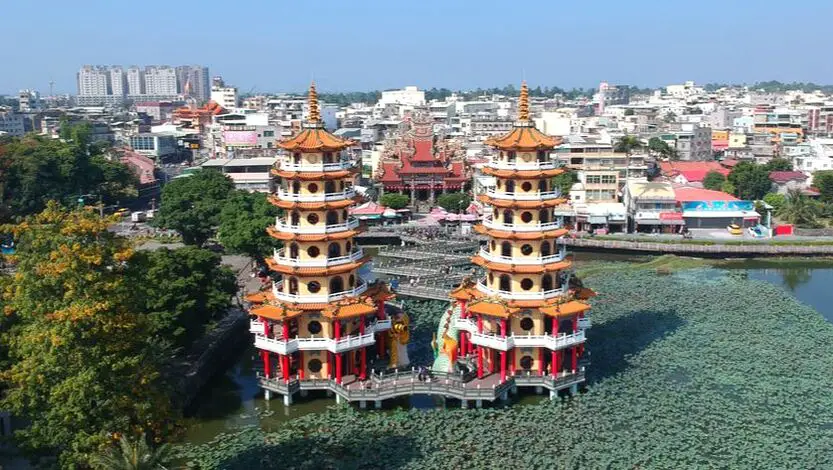
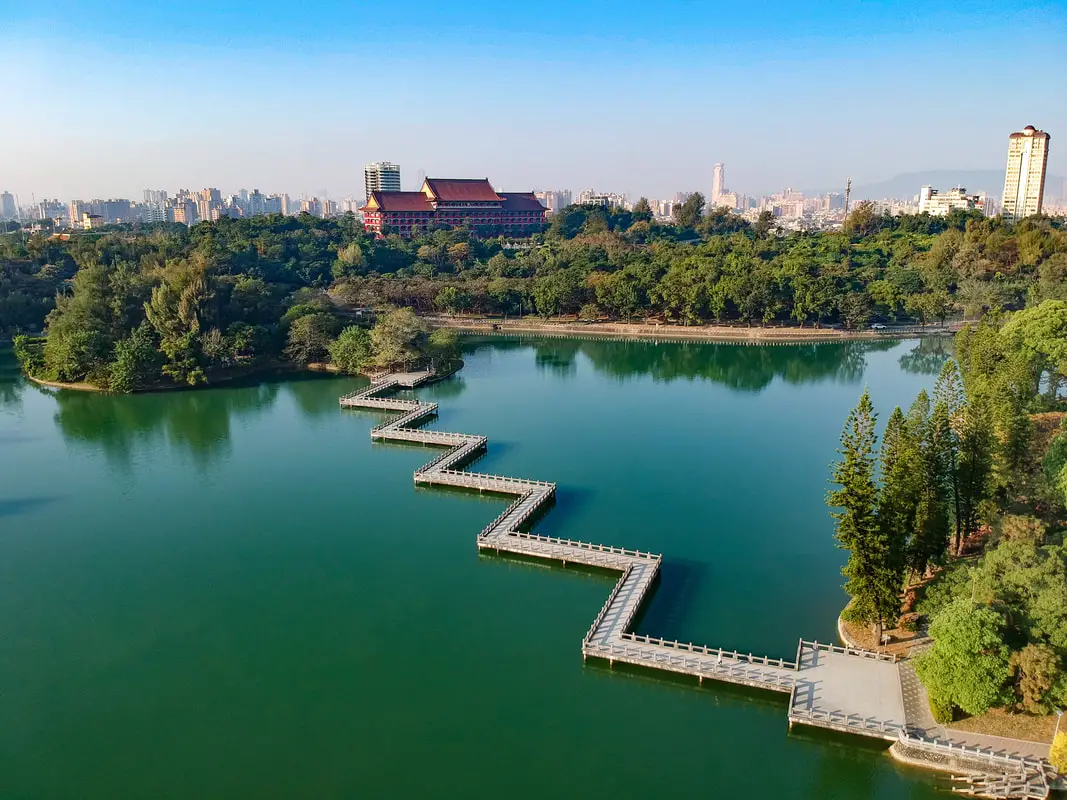
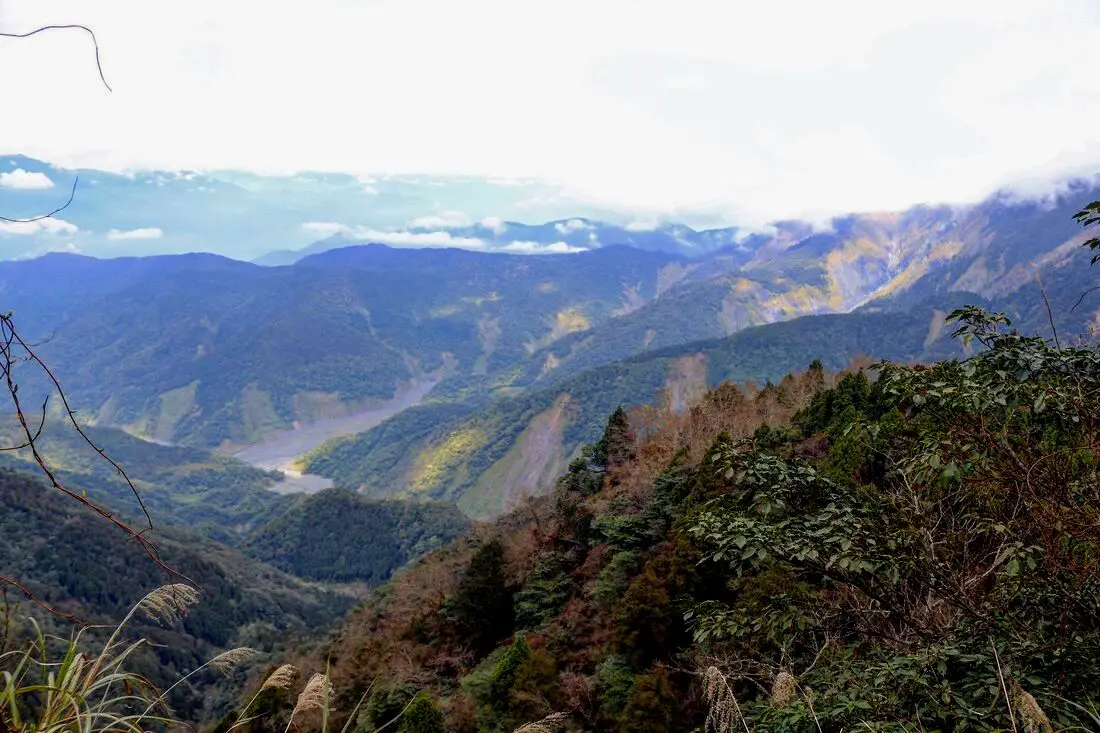
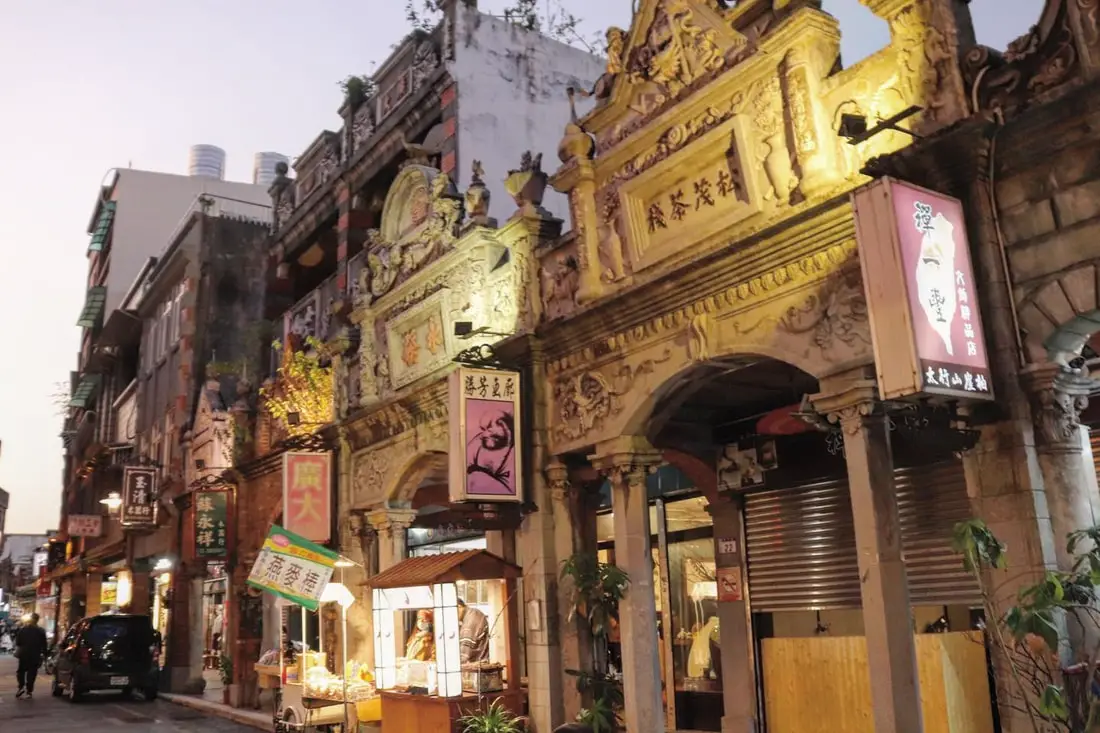


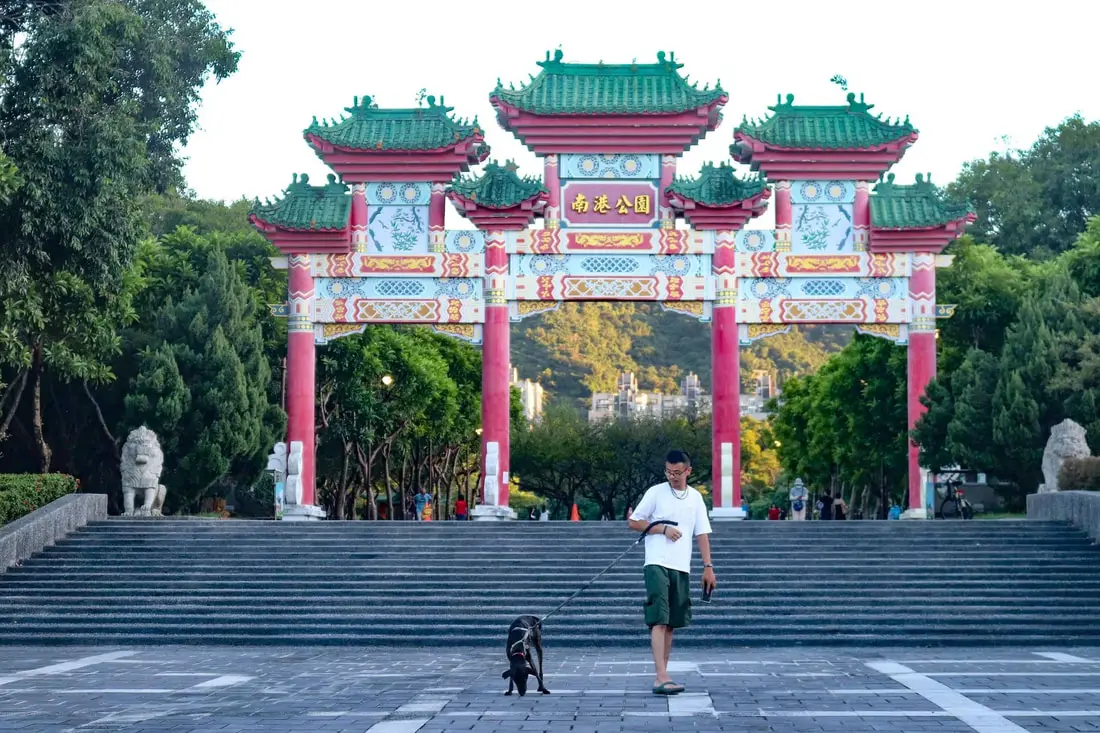
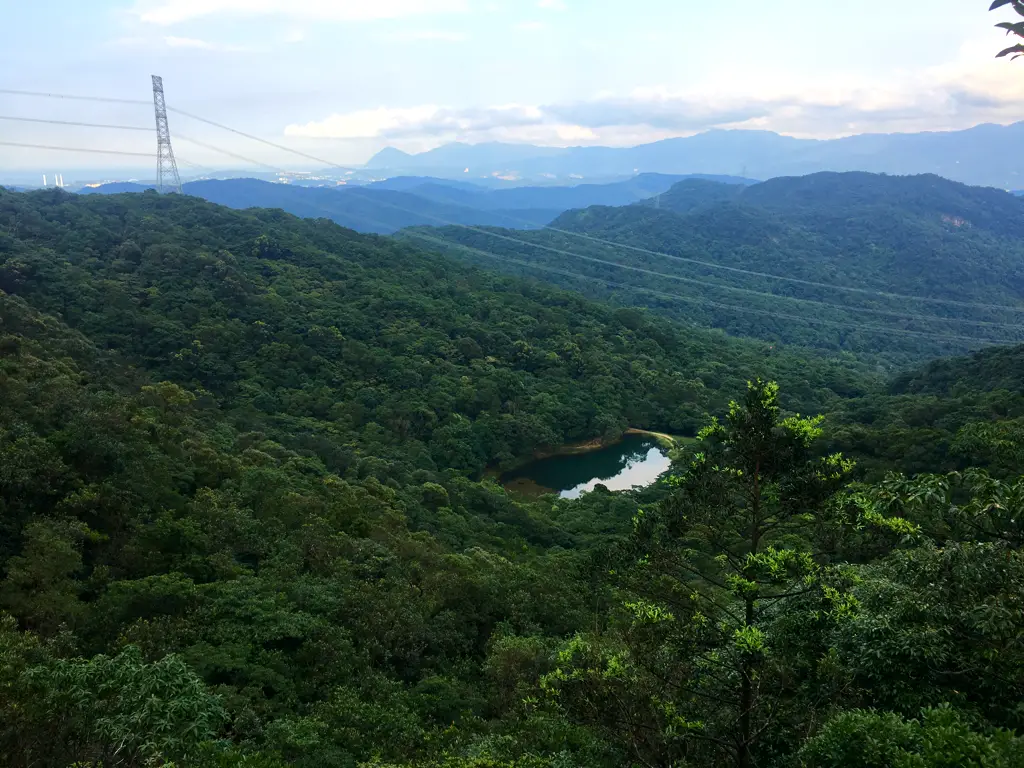
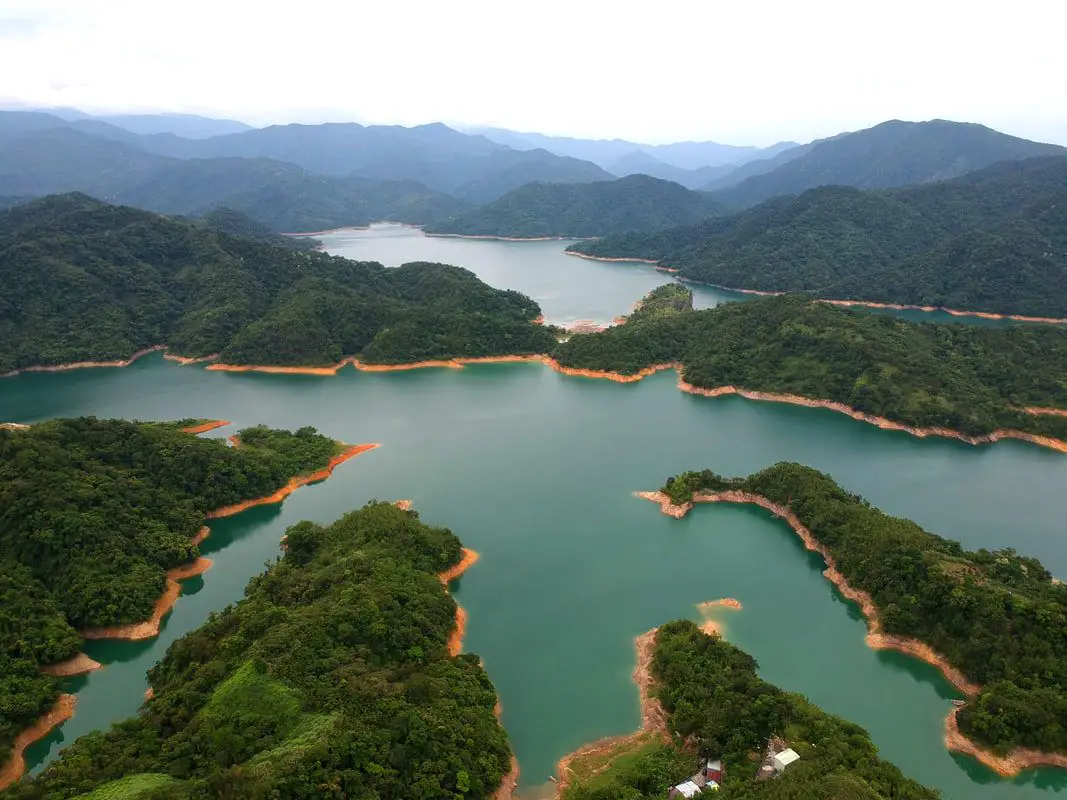
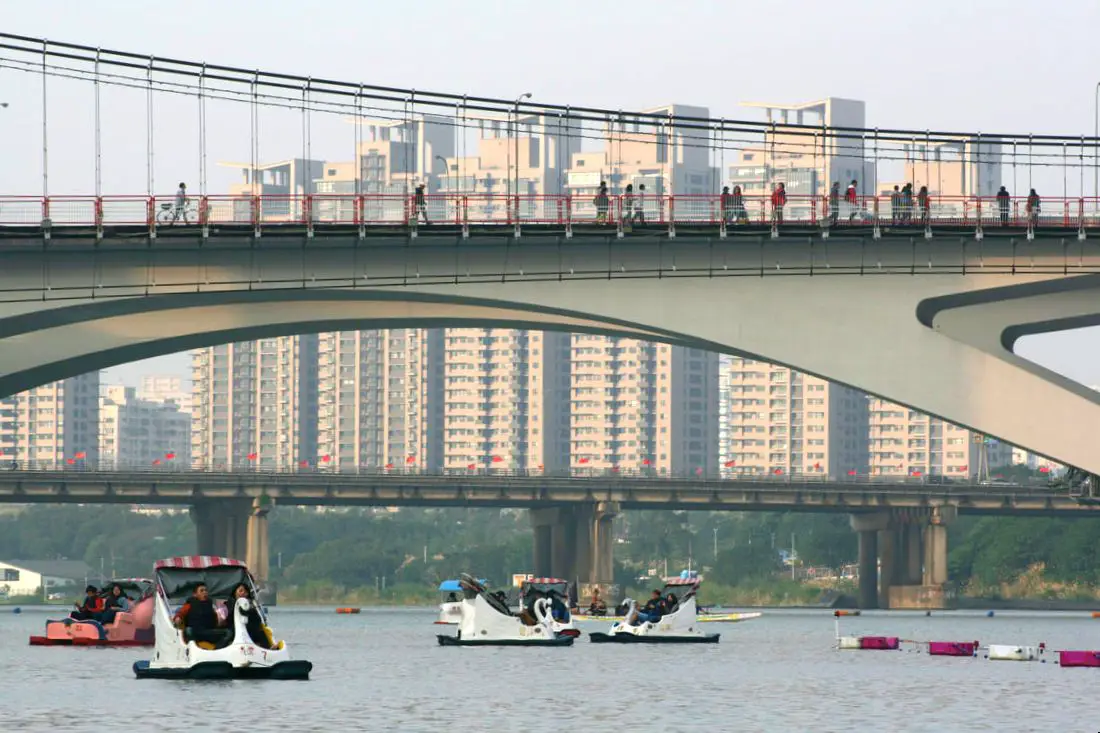
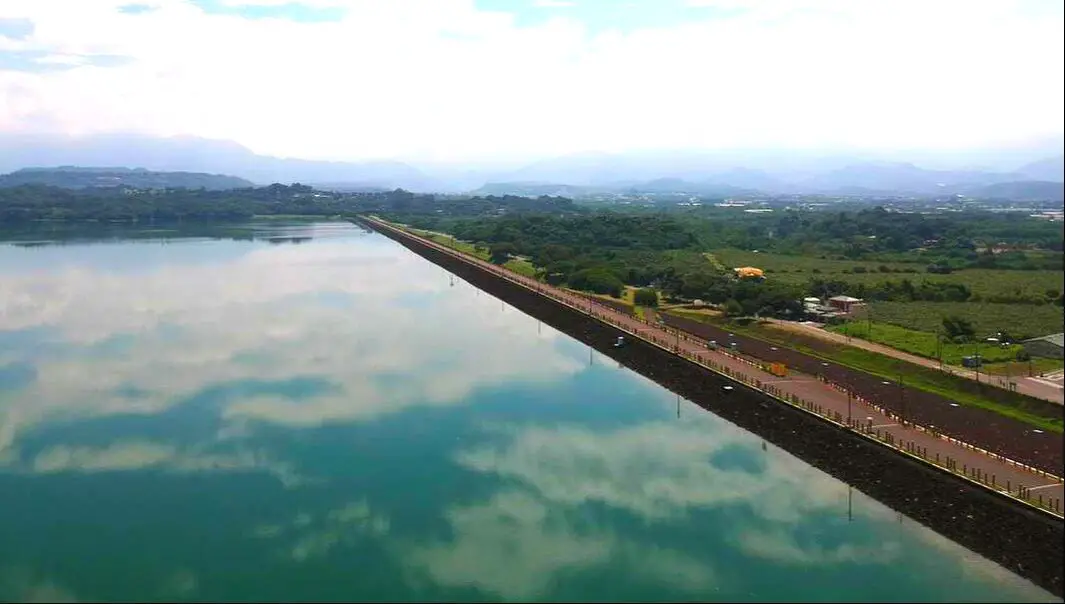
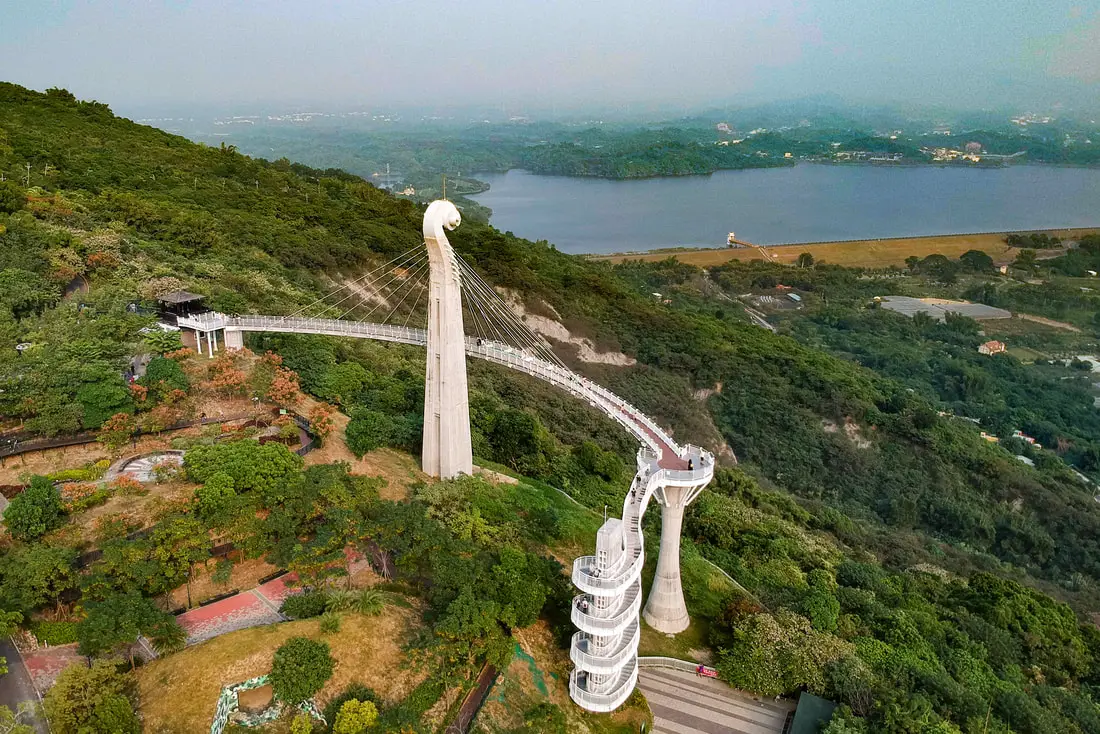
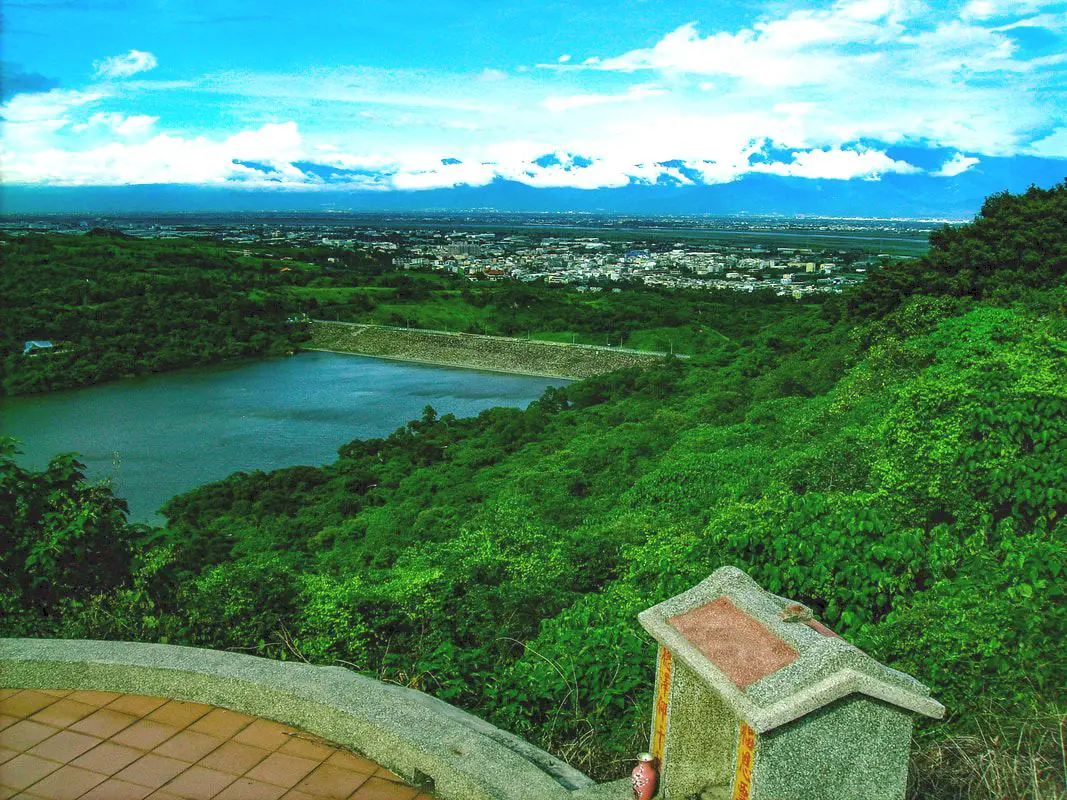
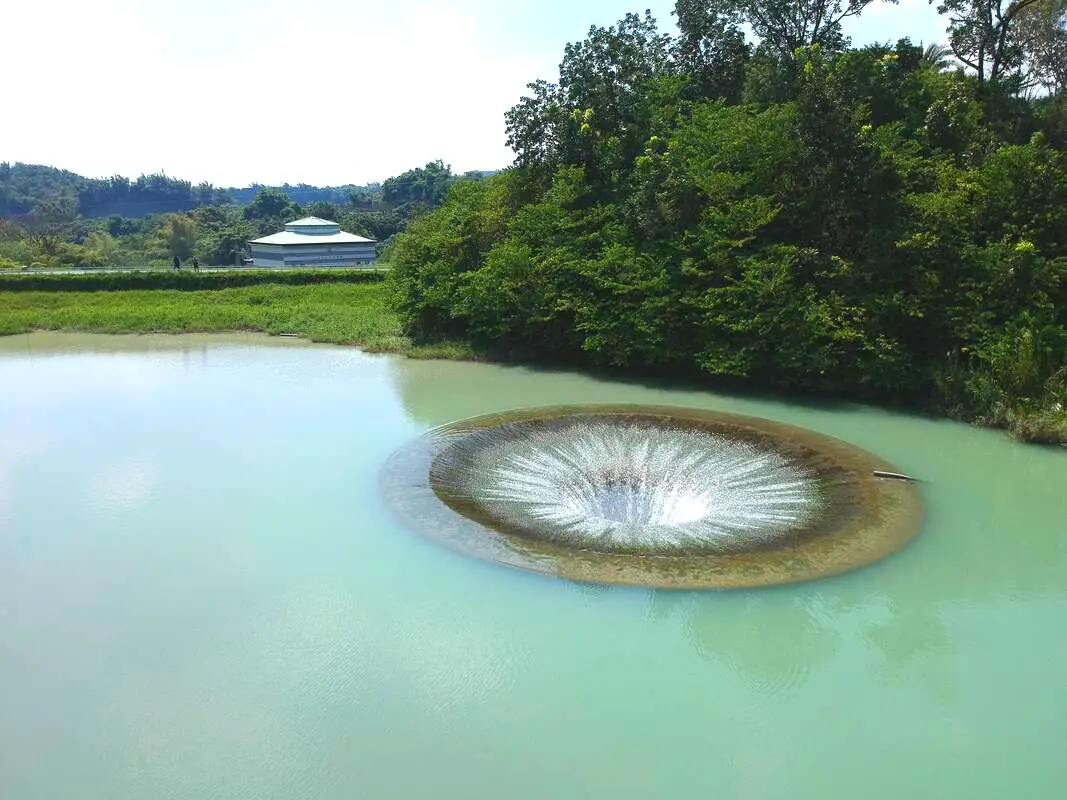
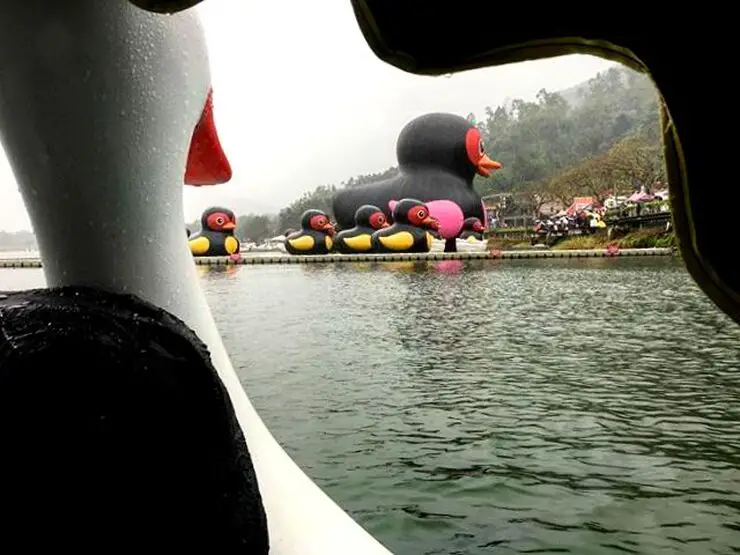
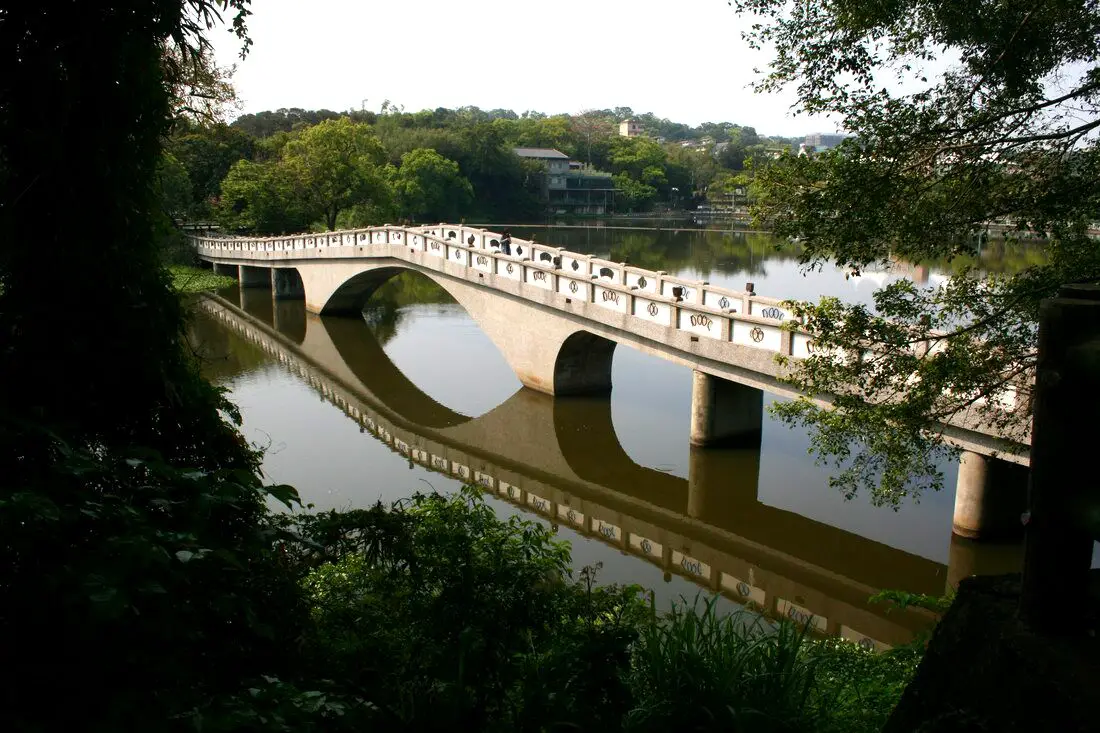
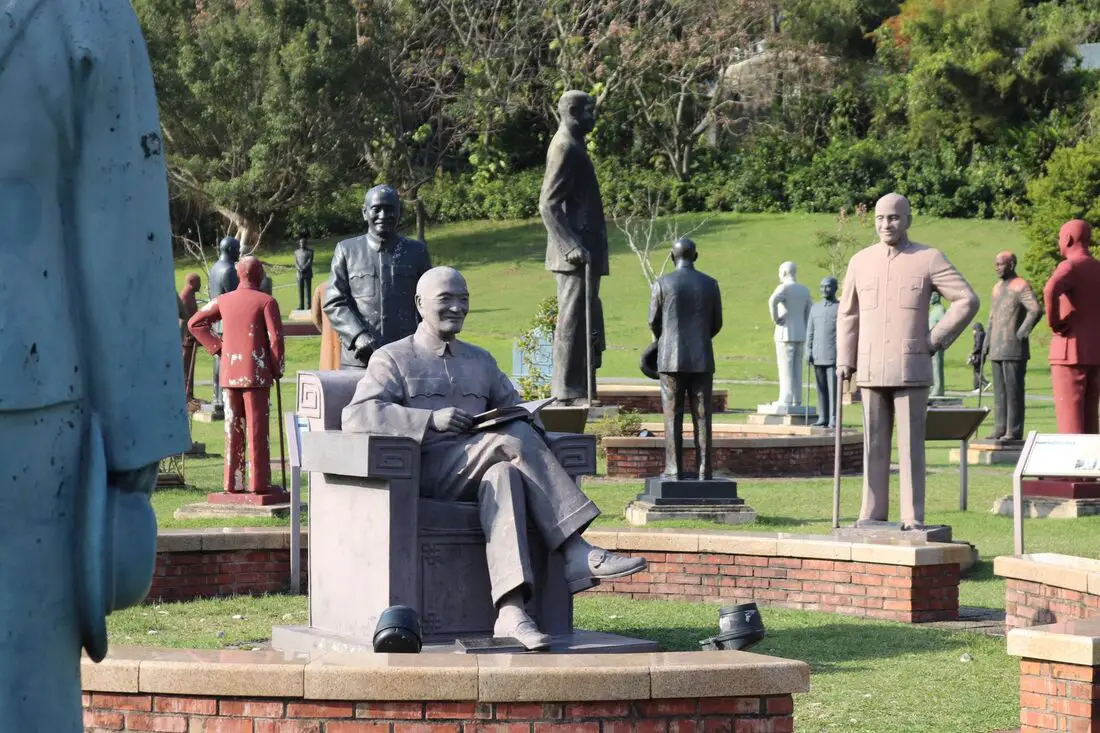
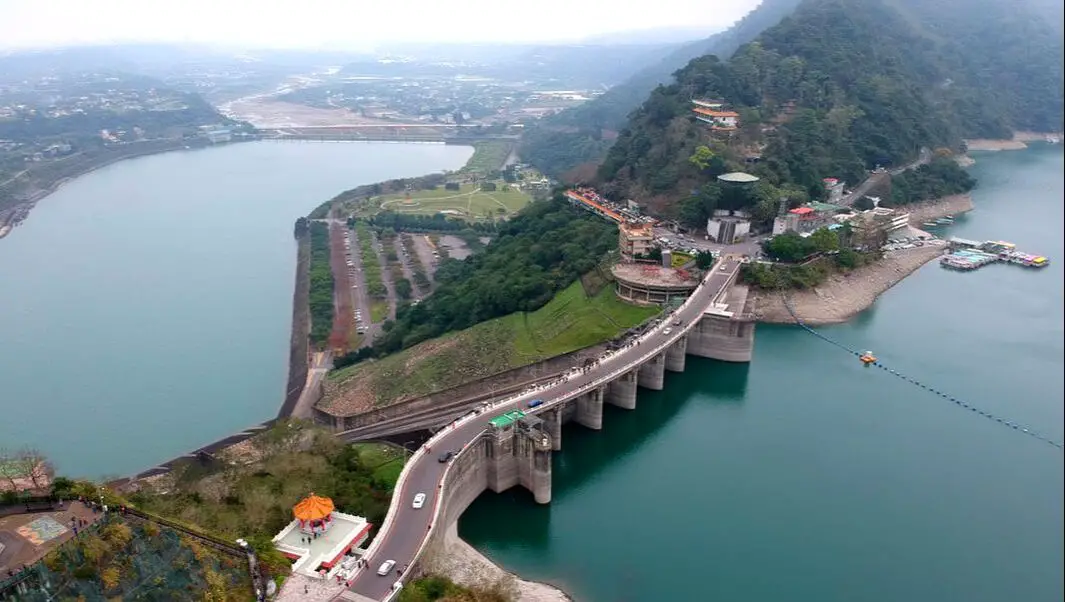
 RSS Feed
RSS Feed
